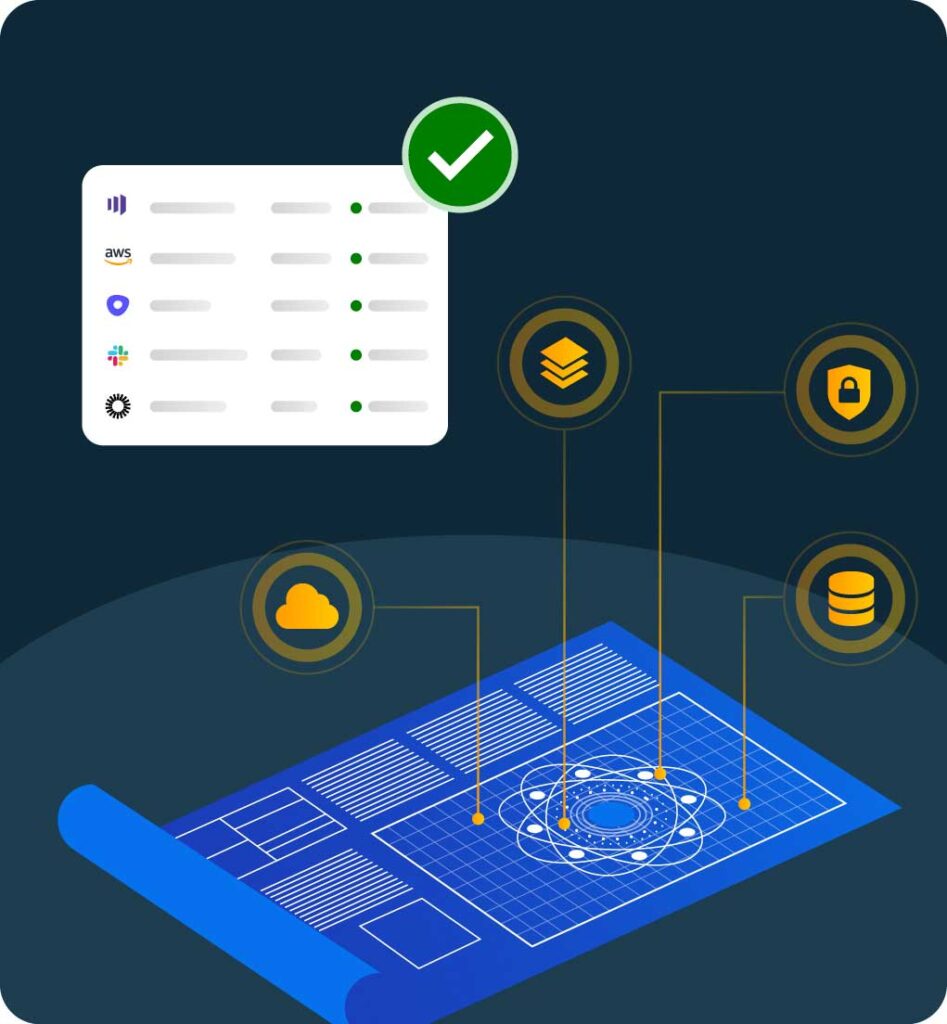Data Mapping Automation
Made Easy
Reduce errors, save time, and outsmart risk with DataGrail’s automated data-mapping solution.
Trust the foundation of your data privacy program.
To comply with data protection regulations, businesses must maintain accurate and current records of processed customer data. However, utilizing outdated surveys and spreadsheets can lead to manual error and significant expense. Live Data Map™ is DataGrail’s solution to these challenges.
Our cloud-based solution automates the detection and classification of systems containing sensitive data across your organization. This minimizes the risk of manual data mapping errors while saving you time and resources.
Live Data Map generates real-time alerts when new third-party systems and data sources are added to your data management landscape, ensuring you remain compliant with data protection laws and can maintain effective data governance processes.


Maintain Data Integrity
Accurately map your data. Minimize risk of human error.
Create a blueprint of systems that hold PII within your organization. Our data mapping software detects up to 50% more PII in third-party SaaS and organizes and categorizes the information to show where source data lives, and how the business is using personal data.

Streamline Your Data Operations
Automate your data mapping workflow.
Carrying out time-consuming data mapping processes can be expensive — especially if you rely on outside consultants. Instead, DataGrail connects to your SSOs to auto-detect which systems hold Personally Identifiable Information (PII), saving your team money and days of work.
Features & Functionality
1. Data Discovery
See the unseen — say goodbye to unknown data in third-party SaaS.Detect unknown third-party SaaS or Shadow IT that’s likely to contain personal data. Our research shows that up to 50% of third-party SaaS goes undetected during manual data mapping exercises. We connect to your SSO to detect third-party systems you could never find manually.
2. Automated Data Mapping
Map your privacy footprint in seconds.Generate a system report inventorying all of your data platforms and SaaS solutions. Each system is enumerated and classified, giving you insights into how enterprise data may be in use across the organization.
3. Auto Update
Keep up with your ever-evolving privacy footprint.Platforms holding consumer data, like your CRM or other SaaS apps, are constantly being updated with new data. It’s virtually impossible to keep system inventories up to date when handling this manually. Live Data Map is dynamic and captures those changes in source data to maintain data quality and keep you continuously compliant.
4. Dynamic RoPA
Keep your RoPA up to date with ease.Data is dynamic, not static. DataGrail’s Live Data Map documents how systems are used at your organization, creating a record of data processing activities (RoPA) for you. This record of data flow makes data management for your enterprise a breeze.
5. Privacy Dashboard
Stay on top of personal data by managing and monitoring your data map from a single dashboard:- View the total number of systems mapped in your inventory
- Surface and prioritize critical inventory system reports (ISRs)
- Track and approve system reports quickly
- Get in-depth insights into your complex data
Discover more about the DataGrail platform and review our customer case studies to find out why industry leaders like Amazon, Salesforce, Overstock, Instacart, and more work with us.
Explore our reports and blogs to read about data privacy trends and discover helpful guides on subjects like employee privacy training, automation compliance, and more.
Book a 1:1 demo with our team, or sign up for an interactive platform walkthrough to see how DataGrail works.
Data Mapping FAQs
What is the difference between manual and automated data mapping?
Manual data mapping involves manually mapping personal data sets to determine how, when, and why it's used by an organization. Automated data mapping uses automated tools and software to automate this process, saving you time and reducing business risk.
What are some common use cases for automated data mapping?
Use cases for data mapping include data warehousing, personal data management, compliance with the GDPR, CCPA, Virginia Consumer Data Protection Act (VCDPA), Colorado Privacy Act (CPA), etc., data discovery and migration, and data-driven applications and API integrations. Data mapping can also help with privacy assessments.
Is automated data mapping a time-consuming process?
No, automated data mapping with DataGrail is not a time-consuming process. It saves you time and reduces the possibility of errors that can occur during manual data mapping.
What types of data sources can be integrated with automated data mapping?
DataGrail can integrate source data from various data models, including XML, CSV, spreadsheets, Excel, JSON, SQL Server, and more.
Is it possible to automate data mapping of personal data while complying with GDPR?
Yes, automated data mapping tools can help with GDPR compliance by enabling companies to understand the flow of data, what data is collected, and how it's used. This knowledge can help organizations prevent shadow IT, protect sensitive personal data, and improve overall data privacy practices.
What are some factors to consider when selecting an automated data mapping tool?
Some factors to consider when selecting an automated data mapping tool include compatibility with various data systems, data structures, data privacy and protection features, scalability, flexibility, code-free implementation, and pricing. DataGrail is a trusted leader in data mapping techniques.
Does data mapping help with data governance?
Yes, automated tools like DataGrail’s Live Data Map helps companies manage their data governance. By understanding where sensitive company and consumer data lives across all systems, it’s much easier for companies to implement effective data governance processes and responsibilities.
What is data governance?
Per Google Cloud: “Data governance means setting internal standards—data policies—that apply to how data is gathered, stored, processed, and disposed of. It governs who can access what kinds of data and what kinds of data are under governance.”
Can data mapping help with privacy assessments?
Yes, DataGrail’s automated tools can help power privacy assessments. Because Live Data Map tracks data across every app a company uses, our Risk Monitor product auto-populates privacy assessments and data fields from system reports.